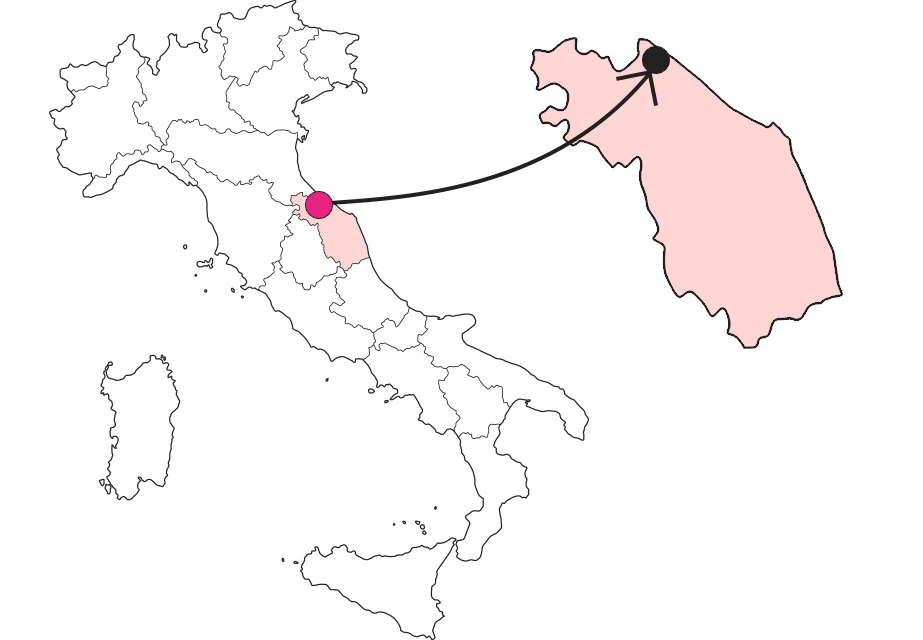SHARRYLAND


Medieval and Oratory Itinerary
A walk through the heart of a city rich in pathos and spirituality



Where is

The name Urbino immediately brings to mind the power of the Duchy, its riches and the artistic marvels that wealthy patrons commissioned from the best artists of their era to celebrate the city. however, even Urbino does not shy away from a very important trait of Italian medieval and Renaissance towns: spirituality. There is among the streets, alleys and stairways, a red thread that, passing from glimpse to glimpse, binds together the city's most beautiful places of worship. And today we propose precisely to put you on the trail of this thread, letting it lead you to the discovery of evocative and wonderful places hidden among the stones of the village.
 Crib of the Oratory of St. Joseph
Crib of the Oratory of St. JosephA walk through Urbino's spirituality
The beginning is nothing short of spectacular: in fact, our walk starts from the Oratory of St. John the Baptist, just a few steps from Piazza della Repubblica, at the end of Via Barocci. It is here that we find access to what can be considered the treasure chest of the pictorial legacy of the brothers Lorenzo and Jacopo Salimbeni da Sanseverino, created in 1416. The oratory, with its characteristic polychrome wooden roof in the shape of a ship's keel, has four walls finely painted with depictions of the Crucifixion in the apse and Stories from the Life of St. John the Baptist in the nave.
The second stop on the itinerary is right next to the Oratory of St. John the Baptist: another beautiful portal introduces us to the Oratory of St. Joseph. Here, you will be enraptured by the beauty of the treasures housed inside: the statue of the saint towers over the high altar by Giuseppe Lirioni, surrounded by fine decorative frescoes. But it is in the Nativity Chapel that one finds oneself catapulted into a grotto. It is Federico Brandani's Mannerist work with an imposing presence: a life-size stucco nativity scene that creates the effect of a cave carved into the rock. While the Chapel of the Wedding features stucco work by Urbino plasticist Francesco Antonio Rondelli, loaded with symbols traceable to a legend from the apocryphal gospels.
 Oratory of the Five Wounds
Oratory of the Five WoundsWalking back and returning to the initial stretch of Via Barocci, you will encounter the Oratory of the Five W ounds. This is a rare gem, the only example of the Baroque-Rococo style in all of Urbino. The construction of the structure dates back to 1643, but its small entrance portal is 18th-century. Inside, the wide vaults are set in a sober architecture. The whole is enriched by a dozen gilded frames containing Scenes from the Passion of Christ painted by Urbino artists in the Baroque tradition. Once back outside, only a few steps separate us from the entrance to Via Raffaello.
The time has come to admire the Convent of St. Francis, one of the first buildings to welcome visitors once they reach the center. It is impossible not to be enraptured by its austere grandeur: after all, the church is considered the "pantheon" of the Urbino people since illustrious citizens such as Giovanni Santi and Magia Ciarla, parents of Raphael Sanzio, and the painter Federico Barocci are buried there. Inside, you will find masterpieces of religious art bearing the illustrious signatures of Barocci, to wit, Giuseppe Passeri and Ercole Procaccini. A memorial that pays tribute to those who wrote the history of Urbino.
 Porfiri House - Gothic Portal
Porfiri House - Gothic PortalAlmost a treasure hunt: in search of Urbino's 14th century
Having reached this point, one can continue the exploration of the center in search of other details more humble than the beautiful oratories, but ancient and witness to the mastery of the local stonemasons. It is almost a treasure hunt, for these are elements that might go unnoticed by the distracted stroller, but which will be able to reveal themselves to the attentive eyes of detail lovers. These are the Gothic Portals, the only vestiges of Urbino's 14th century. There are four of them, and they are located at various points in the city. Taking Via dei Fornari, you will catch sight of one at Casa Porfiri, from the nearby lower courtyard of Palazzo Bonaventura - Odasi. Continuing your exploration through Via Santa Chiara you will see another one at the Oratorio della Croce; and finally at the ancient Palazzo dei Montefeltro on Via Saffi, now a university campus.
Enter the Map of Italy's Undiscovered Wonders and find treasures where you least expect it... Inspire, Recommend, Share...
Collections
The Map thanks:
Enter the Map of Italy's Undiscovered Wonders and find treasures where you least expect it... Inspire, Recommend, Share...
Where is

Collections

